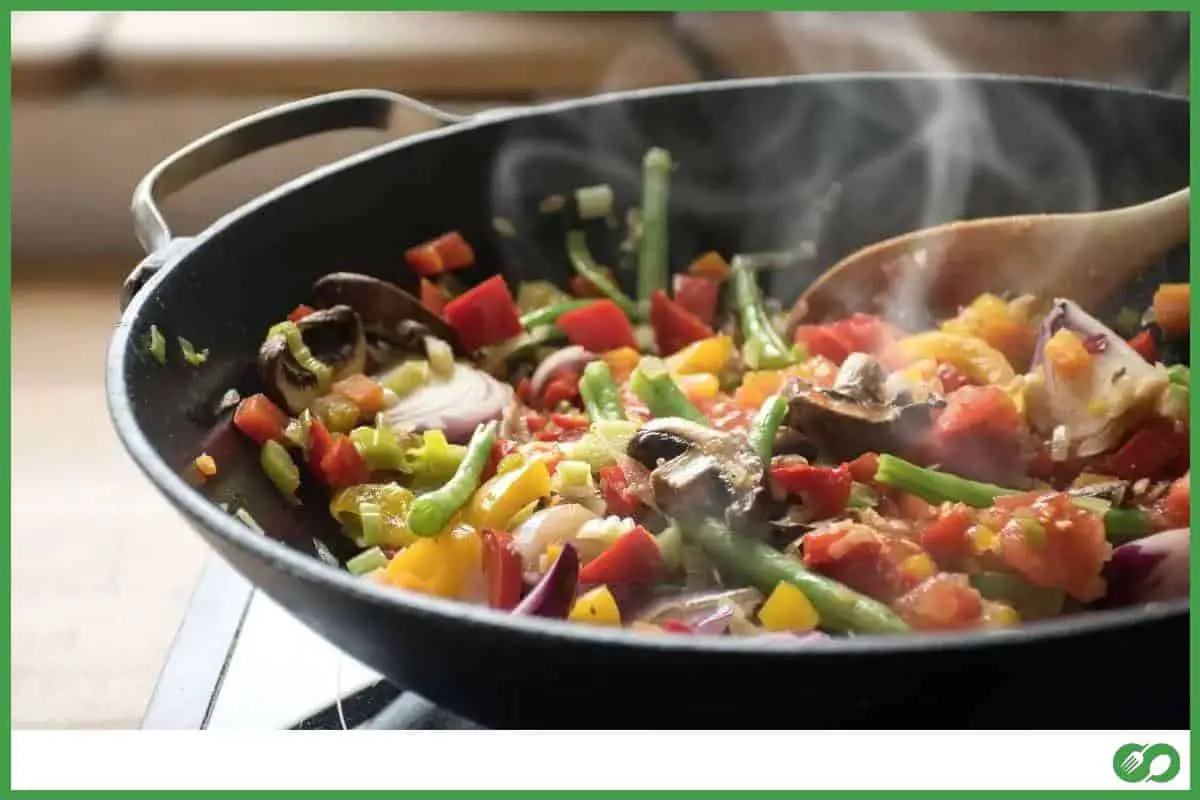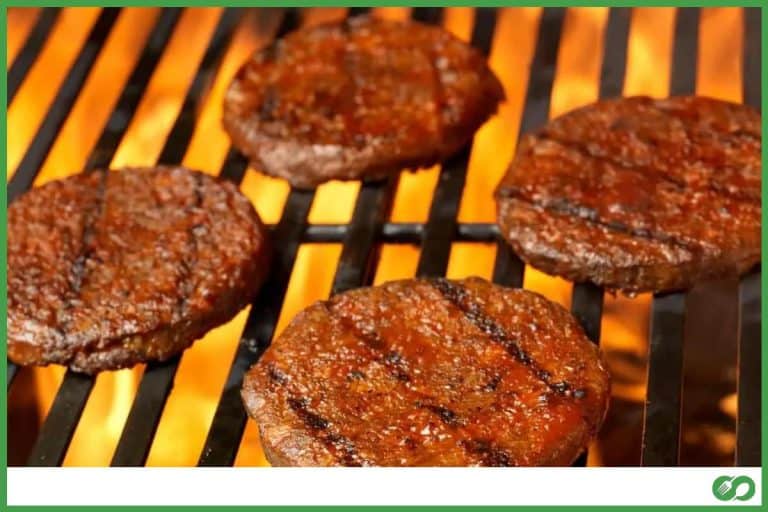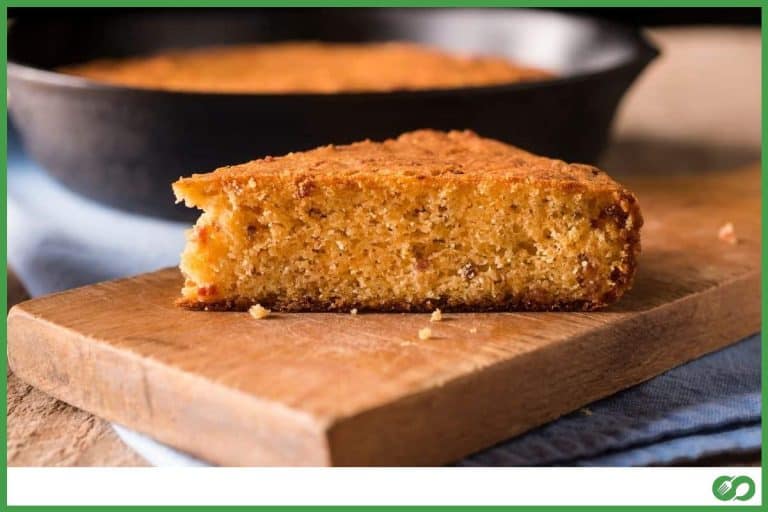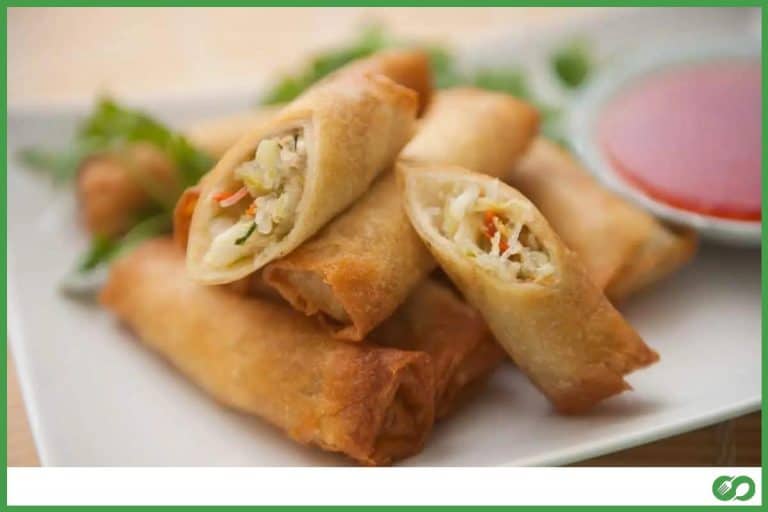Here is Why Your Wok Burns (And How to Fix It)
This post may contain affiliate links which means that, if you choose to make a purchase, I may earn a small commission at no extra cost to you.
Woks are useful when you cook chinese in your kitchen. It can be used for cooking, deep-frying, smoking, braising, and so much more. However, in many cases, people tend to burn the woks. It is not a part of their wear and tear process. Here, knowing the main reason why your wok burns will prevent that and save you a few bucks.
Even after constant stirring, a wok may burn or turn dark brown due to the oil or food residue. It is mainly the burning oil and its impurities burning off to affect the surface area of the wok. On the other hand, wrong temperature, oil, maintenance, and imbalance of moisture causes such burns. Thus, cleaning and creating a protective layer on it is necessary.
There are some ways of maintaining a wok to avoid burns. For example, a cook should maintain a specific temperature while using the wok. You should be aware of the common mistakes. There’s also more to fix a burnt wok, as it is not the same as cleaning a pan or a skillet. Thus, keep reading till the end to enhance your wok skills without burning your food in it.
5 Common Mistakes That Cause Wok Burns
Usually, people make mistakes during cooking that cause wok burns. These mistakes are not significant as it is easy to ignore them. But such mistakes can cause wok burns, unwanted smoke, and burnt meals. Here, I have listed five common mistakes that we all did:
1. Skipping seasoning your wok to avoid burns
Woks are for daily use, especially if you use them for braising, deep-frying, smoking, and steaming. It is not shocking that high heat will leave stains or burns on the wok after such use. Now, if you haven’t seasoned the wok due to lack of time, the wok cannot protect itself from damage.
Seasoning your wok means creating a protective layer over the surface area of woks. By creating this non-stick and oily surface, you will protect the wok from corrosion and rust. It is especially true for woks without non-stick surfaces. Hence, do not forget seasoning.
2. Cooking at a wrong temperature
Most people believe that cooking at high temperatures will burn the outer surface area of the food. Yes, it is true when you’re cooking in pans and skillets. But it is the opposite in the case of woks, and many people are unaware of it. Cooking in it requires relatively high temperatures.
The temperature should be very high, around 450 degrees Fahrenheit. However, the temperature may vary according to the dishes and their amount. Cooking at a relatively low temperature will let the ingredients or spices stick and scorch in the inner surfaces of the wok.
3. Using the wrong oil
All types of oil do not suit wok as it requires high temperatures. If you are cooking with oil with a low smoke point, it is more likely to burn the wok. For instance, olive oil has a low smoking point. Hence, using it in a wok will break down the oil to burn the wok quickly.
Peanut or grapeseed oil is more suitable for cooking in woks. They burn slowly, so there will be lesser chances of them burning or making the food bitter.
4. Poor preparation of ingredients
There might be an imbalance of moisture when you’re releasing your ingredients in the wok. As you may have noticed, sliced ingredients contain a lot of moisture. You may have been releasing them just after slicing; the moisture reduces the temperature of the wok.
As a result, the lower temperatures let the food stick to the surface of the wok to burn itself. It is especially true when stir-frying. Thus, wipe the ingredients dry before releasing them.
5. You’re not cleaning the wok properly
Cleaning woks are necessary as food may stick to their surfaces after cooking. If you’re cooking in it without cleaning it first, you’re re-burning the old food that’s stuck to its surface. It causes further burns.
However, you may be cleaning it and still getting your wok burnt. It happens if you are wiping off the protective layer on the wok while cleaning it. Thus, know how to clean.
How to Clean and Fix a Wok with Burnt Food?
Cleaning woks with just a scrubber will not fix a wok with burnt food. It will only wipe off the protective layer or the patina on it. Thus, you need to know how to clean and fix it following the correct steps. But first, you need a wok brush and lukewarm water.
To fix a wok with burnt food, you need to loosen the burnt food and stains. Pour some warm water on it for a while. After five minutes, use a wok brush or a soft sponge to gently scrub the inner surface of it. Here, note that you should not scrub it harshly, or you’ll end up wiping off the patina.
Remember that you should not mix soap or detergent with warm water while washing. Lastly, wash the outer surface using a scrubber sponge in the same way. I have always used plastic cards, old credit cards for example. They reach the sides of the wok to ensure a safe scrub.
Another way of fixing a burnt wok is to sprinkle baking soda. The advantage of using baking soda is that it is effective and readily available. First, fill up the wok with water. The water does not have to be hot or warm; room temperature will be okay.
Next, according to the size of the wok, mix some teaspoons of baking soda in the water. Then place the wok on the stove and boil the solution. After turning off the stove, leave the warm solution in it for a few hours.
Once the solution cools down, pour out all the water to gently scrub the surface of the wok. It should be able to wipe off the burnt food or residue on it. Just for you to know, the two techniques will work on both cast iron and carbon steel woks.
Season Your Wok to Avoid Burns
Seasoning your wok or creating a protective film avoids burns. First, clean the wok. You may use soap or detergent at this stage. Meanwhile, turn on the stove or preheat your oven to three hundred degrees Fahrenheit. After washing it, pat it dry with a towel.
Secondly, increase the heat of your stove and place the clean wok on it. If you’re using the oven, open the pores of the wok. Then burn the wok until it turns grey. After that, let it cool down.
Thirdly, evenly spray a thin coat of oil that has a high smoke point. Vegetable oil works well. At this stage, I use canola oil. Cover all its sides, including its handles. And remember, you cannot apply much oil to it.
Lastly, turn on the stove again to burn the oil-coated wok. In this stage, let the oil on the wok reach its smoke point. Let it smoke until it stops smoking. Turn the wok to burn the other side of it.
If you’re using the oven, let it bake for forty-five minutes straight. Make sure to use a foil underneath the wok. The inside and the exterior side of the wok should turn matte grey after it’s baked and burnt. And if it doesn’t, repeat the steps to get the perfectly seasoned wok.







